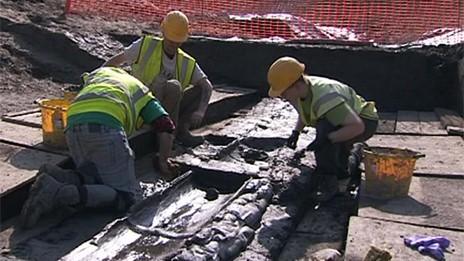Bronze Age houses: What the finds tell us
- Published
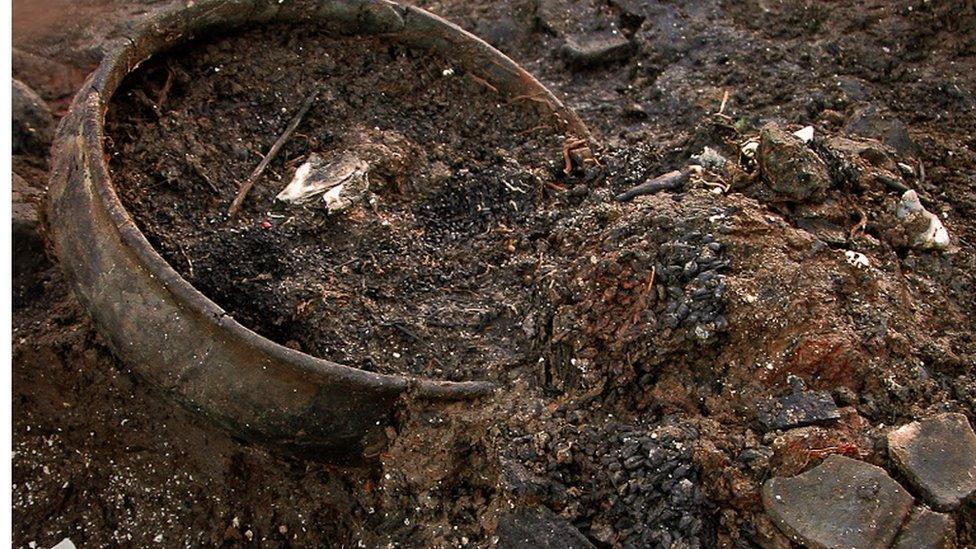
Who were the communities behind the items?
At a quarry in Cambridgeshire, archaeologists say they have discovered Britain's "Pompeii - a number of well-preserved dwellings dating back to the Bronze Age. The artefacts found there reveal new details about the period between 2500 and 2000BC and those who lived through it.
What did they eat?
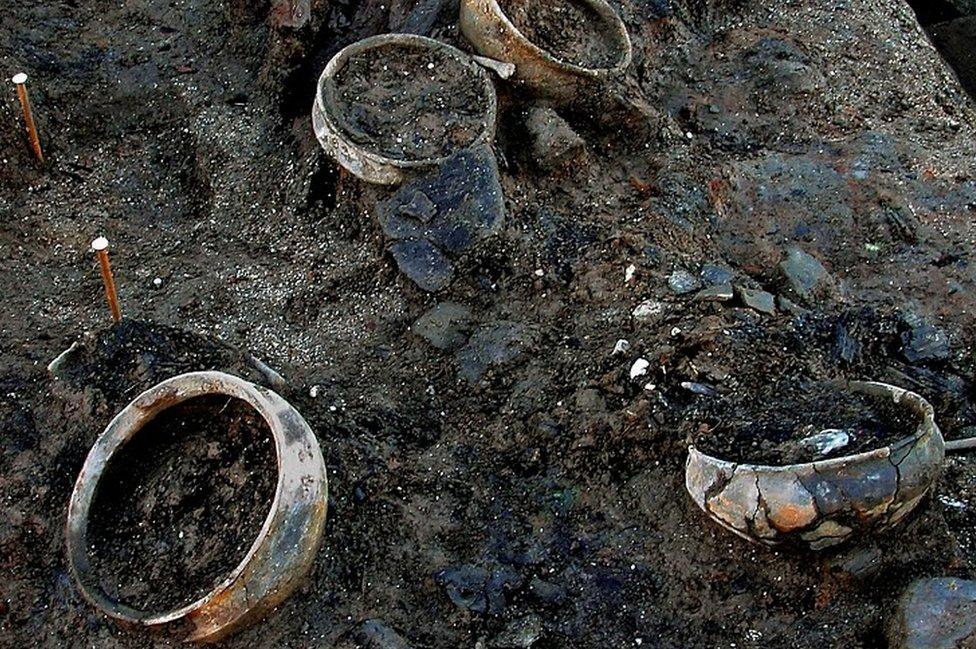
After analysing pots found at the site, archaeologists found some contained food
One of the finds at Must Farm quarry in Cambridgeshire were pots with meals still inside. According to Selina Davenport, an archaeologist who helped uncover the Bronze Age dwellings, the find suggests that the pots were being used to make pottage.
"Think porridge and add a few extra herby things, and if you were lucky you might have had honey to dollop in the middle. It isn't a great meal, and if someone put a bowl in front of you, you wouldn't light up," says Chris Gosden, Professor of European Archaeology at the University of Oxford.
"What people mainly ate was vegetable based dishes, so the discovery of pottage isn't a great surprise, as meat was something saved for special occasions."

A modern day image of a meal of pottage
'Complicated' woodwork and textiles

The team excavating found 'sophisticated' woodworking joints and evidence of woodland management
"This site has provided evidence of things we didn't have evidence for before, like the Bronze Age people's amazing woodwork skills and knowledge of timber," says Duncan Garrow, an associate professor of archaeology at Reading University.
The finds include sophisticated woodworking joints and evidence of woodland management.
According to Mr Gosden they show the Bronze Age inhabitants were skilled carpenters able to construct really complex settlements in tricky environments.
"We know people in the past were incredibly skilled, but this gives us a sense of the range of skills these people had and in an environment we would find very difficult to work in, they are totally at home with. The thing about wood is you need to think ahead. If you're going to build a house you need to have planted the right trees and have the right material. In these dwellings, there's evidence of a whole managed landscape and people's ability to plan and think ahead."
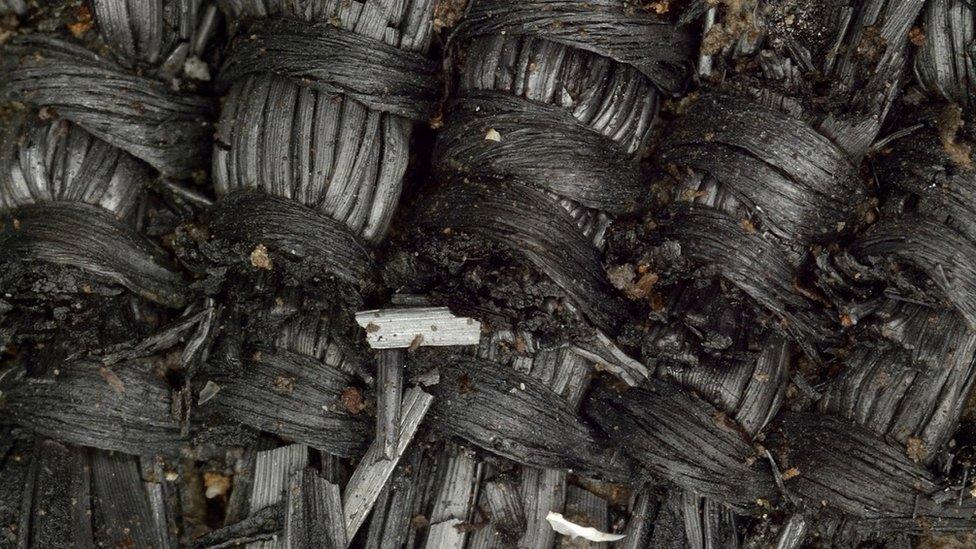
These preserved Bronze Age textiles were made from plant fibres such as lime tree bark
The discovery of textiles made from plant fibres such as lime tree bark suggests those living in the Bronze Age were skilled in the use of a range of different materials.
"Making things with this fabric is more technological and complicated, and is something we didn't expect," says Ms Davenport.
From the Balkans to Britain
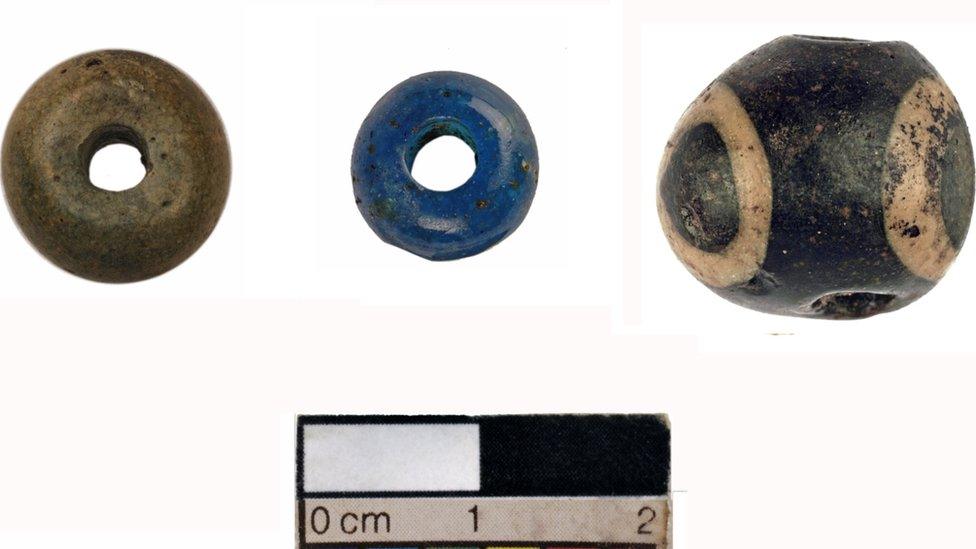
Glass beads found during excavation are thought to have come from the Balkans
An earlier excavation at the Must Farm quarry uncovered these "exotic" glass beads that formed part of a necklace and, according to archaeologists, "hinted at a sophistication not usually associated with the Bronze Age".
Ms Davenport says the beads, which look similar to Roman beads, suggest trading between continents was further spread than initially proved.
"These beads confirm a few of our suspicions. Using the signatures within the glass, we can tell they came from the Balkans. We know there were some established trading routes coming from near continents to Britain at the time, but this is spreading that territory even further," says Ms Davenport.
Why did they leave?
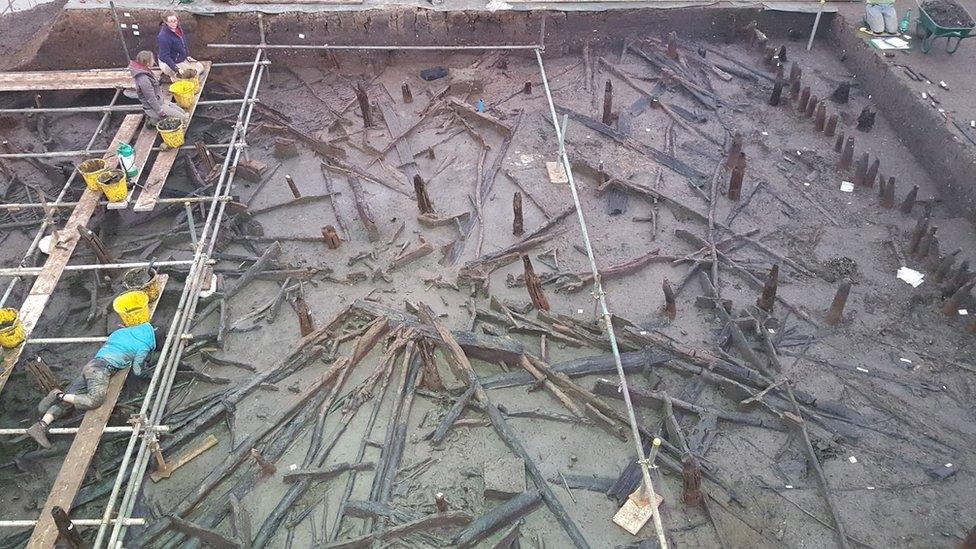
Archaeologists work on a wooden platform as they uncover the houses
The settlement discovered at Must Farm quarry is made up of circular wooden houses, built on stilts, and dates from about 1000-800 BC.
A fire destroyed the posts, causing the houses to fall into a river where silt helped preserve the contents. Archaeologists at the site think they have found five houses but are not yet certain.
"It's like a snapshot, a moment in time," says Mr Gosden.
"We've known for a while that in both the Bronze and Iron Age, people burned down and abandoned their houses for physical reasons. There doesn't seem to be any physical reason as to why they had to abandon this house and go somewhere else," he says.
"It was some other reason. The question is, what? The sorts of things that might be the case is the death of a significant person or a major trauma to the community - something social and cultural within the life of the community."
- Published12 January 2016
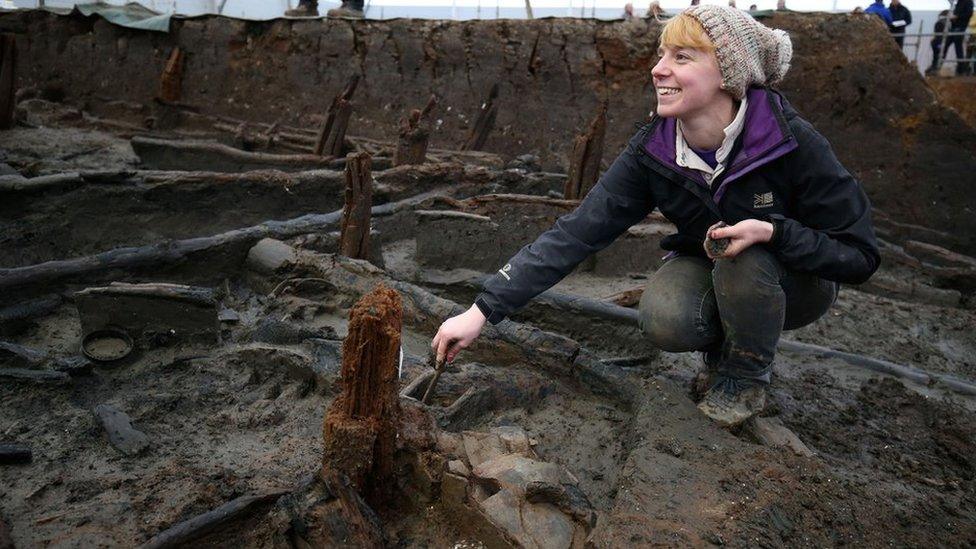
- Published12 January 2016

- Published9 December 2015
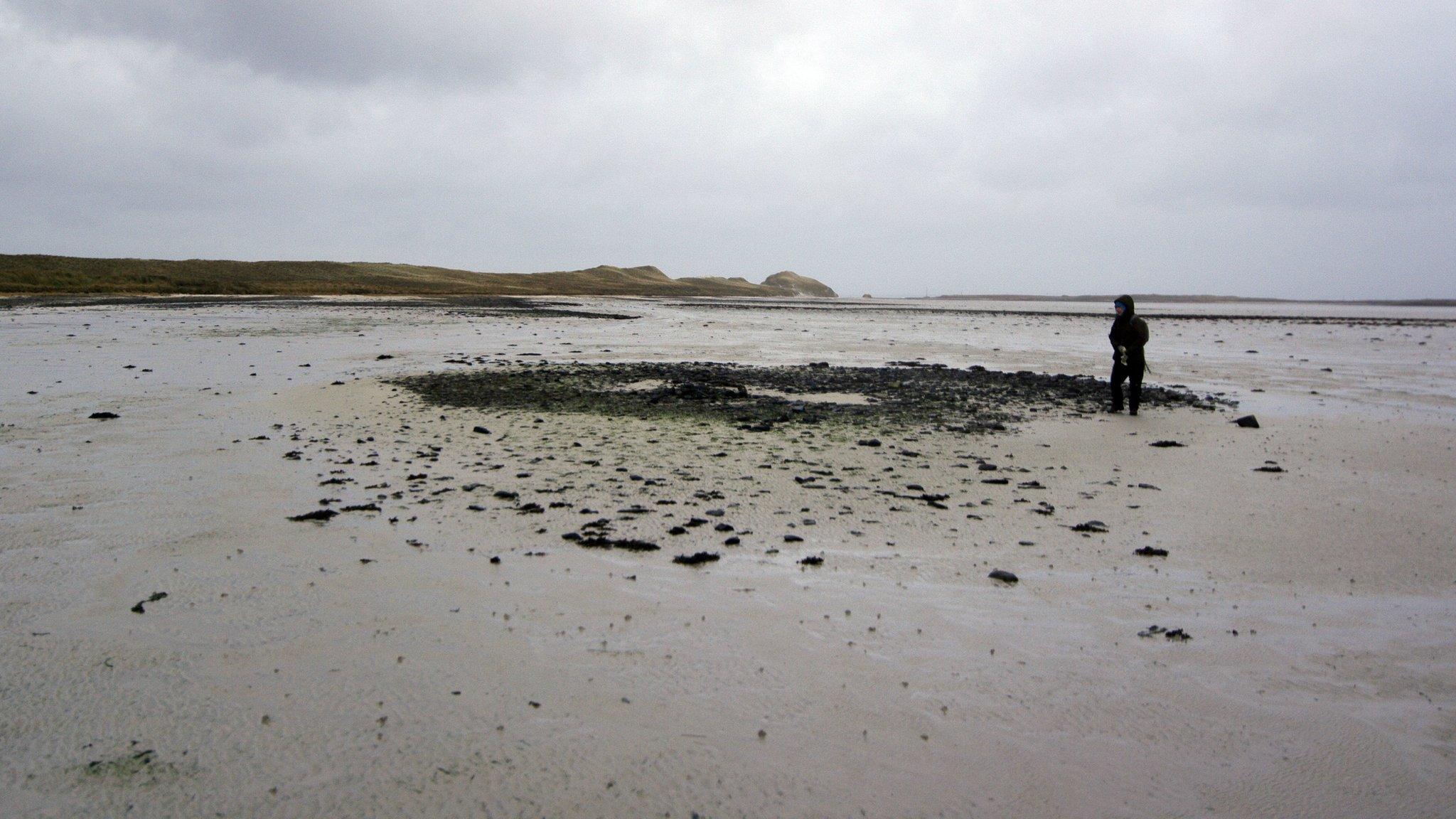
- Published8 September 2013
